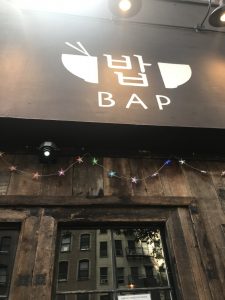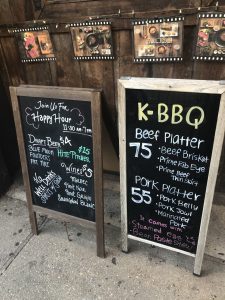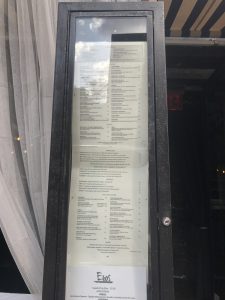New York is the “melting pot” of America encompassed into a single city, with 33% of residents being white, 26% Hispanic, 26% black, and 13% Asian according to the 2010 census. (The Furman Center, 2011) Boasting a dynamic and diverse population across all five boroughs, it is no wonder that New York is home to the United Nations Headquarters, located in Manhattan next to the East River. New York is famous for many of its iconic monuments, museums, memorials, and other sights, such as the Statue of Liberty, the Museum of Modern Art, the 9/11 Memorial, and the Empire State Building to name just a few. The many cultures that mix together in New York create the bustling melting pot iconic to the “city that never sleeps” to create a uniquely “New York” experience.
New York has one of the world’s largest public transportation systems, with 27 subway lines and over 700 subway and bus stations. (Great American Country) This grid connects the five boroughs and allows one to easily travel from one cultural community to another, and makes it much easier to travel around by foot. During my first week here, I took full advantage of the ease with which one could travel back and forth and took the time to fully explore the Manhattan area as much as I could. While wandering around, the first thing that struck me was just how many restaurants, delis, and markets lined the streets. In particular, I found it interesting just how many Chinese and Japanese shops were mixed in with the numerous Halal food trucks and pizza shops, displaying signs advertising lunch deals for ramen and sushi. Not just Asian restaurants, but the restaurants and bars in general were very culturally diverse, which I chose to look at further in order to study the linguistic landscape.
Looking at the linguistic language of New York, it was interesting to observe how economic factors appear to affect the languages used on menus. Leeman and Modan state that, “Material manifestations of language are implicated in the micro-level social, political, and economic processes that have led to the current landscape of Washington DC’s newly gentrified Chinatown.” (Leeman and Modan, 2009)


I walked past this Korean bar and restaurant while walking around, and was surprised because most of the Korean stores and restaurants in New York I had seen in my past visits to New York remained concentrated around the Koreatown located on W 32nd Street. Unlike the other Korean restaurants I had seen, this restaurant had everything written in English, not even romanized Korean words, with the most “Korean” item listed being the Hite beer (a Korean brand). One thing this restaurant did have in common with other Asian restaurants (namely Chinese and Korean) was the presence of pictures to provide further description for the items on the menu — items that may otherwise be difficult for non-Korean patrons to visualize based off the English descriptions and names alone. This Korean restaurant’s location in a neighborhood otherwise void of Asian shops may be the major factor in why everything was in English save for the restaurant’s name (밥 / BAP), which translates to “rice”. While the advertised $75 Beef Platter and $55 Pork Platter seem pricey, it’s actually on the cheaper side for Korean barbecue that I’ve seen in New York, and the Happy Hour suggests the very casual and drinking atmosphere of the restaurant/bar.

In contrast to the Korean restaurant, this Greek restaurant’s menu lists the names of all their items in Greek with descriptions in English. This restaurant is also one of a more formal atmosphere, and the use of Greek on the menu brings an air of authenticity. Aside from the two example pictured, I also observed the difference between two Chinese restaurants as well. The cheaper, take-out and delivery oriented Chinese restaurants had large signs with “CHINESE RESTAURANT” written in English outside their establishments with large pictures providing descriptions of menu items above the counter, whereas larger family-oriented restaurants like ‘Auntie Guan’s Kitchen’ had both English and Chinese using red lights or banners to incorporate well-known cultural elements. Much like how the more casual Korean restaurant BAP used English, in the case of these eateries it appears to be that use of English signifies a more casual vibe, whereas use of other languages like Greek or Chinese serve to add an air of authenticity to create a more “sophisticated” atmosphere and experience to the visitor. Comparing the use of language on these two menus posted outside of the two different restaurants, it is possible to observe the symbolic function of language to define the social and economic atmosphere of a location.
https://www.greatamericancountry.com/places/local-life/cultural-diversity-in-new-york-city
https://www1.nyc.gov/site/diversity/index.page
‘Commodified Language in Chinatown: A Contextualized Approach to Linguistic Language’, Leeman and Modan
This is very relatable as I am from New York. Despite living in NY for most of my life, I actually never had the opportunity to visit Koreatown. From what I can gather from your essay, it sounds like a very enjoyable place to visit. The use of imagery to convey the dishes to customers who are not fluent in Korean is very beneficial. I also agree that the use of foreign language as in the example of the Greek restaurant convey a sense of culture to the customers to pique their interests.